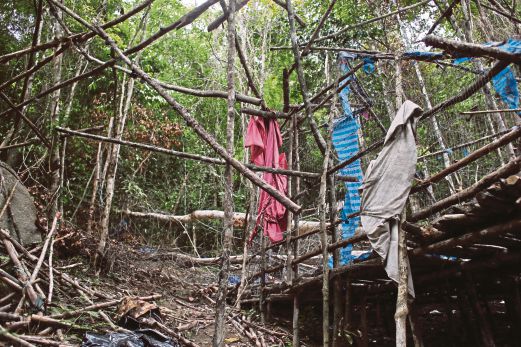Rohingyas need more than rhetoric
Professor Tan Sri Dato' Dzulkifli Abdul Razak
Learning Curve: Perspective
New Straits Times - 5-6-2015
SOME 40 years ago, under the brutal despot, Pol Pot, of the Communist Khmer Rouge regime, more than a million people faced a cruel death. From 1975 to 1979, immediately after the Cambodian Civil War that preceded it five years earlier, the massacre took a more aggressive posture which is widely regarded as part of a planned and systematic mass killing. To date, at least 1,386,000 people were summarily executed according to some research-based official estimates. The number could bloat up to over two million if cases of people left to die of hunger, starvation and diseases were taken into account. The total population in Cambodia in 1975 was estimated to be some eight million people.
The genocidal tragedy is infamously known today as the “killing fields” — referring to the various sites of mass graves, stretching from a few kilometres from Phnom Penh to some unspecified ones throughout Cambodia, before the demise of the regime in 1979. The memory remains strong given the unprecedented display of skeletal remains epitomising a widespread cruelty unlike anything ever seen before.
Malaysians, too, are beginning to feel that chill down the spine when similar graves were uncovered at our northern border. The discovery of 139 graves at 28 transit camp sites, which have since been abandoned, near Kampung Wai right up to Padang Besar in Perlis, shocked the nation.

An abandoned camp at Wang Kelian in Perlis where graves were found recently. EPA pic
Although the reasons for this are rather different, implicating human trafficking of the Rohingyas, it nonetheless involved the tragic loss of human lives. Some of them could have been from among the thousands who were fleeing their countries in desperation to save their life and dignity.
In this context, the exodus of the Rohingyas is nothing less than “boat people” being pushed into the waters of the Andaman Sea. It at once ignites the nightmarish images of yet another possible killing field. Perhaps this time a “killing sea” where thousands are left adrift without sufficient — if any at all — food, water, clothing and shelter from the harsh weather and environment.
Being largely stateless (or made to be such), these groups of “boat people” are crying for the mercy of the international community that is grappling with endless issues of refugees as a result of the expanding wars that erupted in the Middle East since the invasion of Iraq.
What is clear is that there are not too many who are sympathetic enough to the plight of the Rohingyas. They have been the victims of torment and torture for over five decades, but the world hardly noticed it, or at the most relegated their plight to the lowest of priorities.
Similarly the Muslim world is kept busy fighting proxy sectarian violence, and of late wars squeezing out whatever small interest is left, to reach out to the Rohingyas who, incidentally, are Muslims.
It appears that the ultimate hope lies with Asia, in particular the Asean countries, being closest to the source of the issue. Given that the Asean Community will be formed by the end of the year, it is only appropriate that the Rohingya issue be solved collectively for the long term and put the community on the right footing to co-exist.
All the more since Asean proudly recognised its own Nobel Peace Prize winner who had been outspoken on issues of human rights and discrimination, while being portrayed as an ardent champion of democracy. Like the moral force consistently asserted by co-religionists and another Nobel Peace Prize winner, the Dalai Lama of Tibet, Asean too should advance the just cause of the persecuted.
Indeed, President Barack Obama, another fellow Nobel Peace Prize winner, is also urging for immediate action to save the Rohingya. Reportedly, Washington is concerned about how they have been treated, dubbing them as “a minority living in apartheid-like conditions”.
All this rhetoric must be translated into concrete action by asserting pressure on human rights and democracy, beginning with the Nobel Peace Prize winners who have, thus far, been oblivious to the ongoing atrocities before their eyes.
Allegedly, the Rohingyas, as “boat people”, have been subjected to a far worse fate than meets the eye — including “forced labour, land confiscation, and limited access to public services”.
Unless conscious efforts are firmly executed worldwide, the world will witness another killing field any time soon near neighbouring Cambodia! The international community, and Asean in particular, will be held accountable for this crime against humanity if this is to happen once again. Asean cannot allow this to go down in history as part of its legacy.
The writer is honorary professor at the University of Nottingham and Chair of Leadership at Universiti Sains Islam.
